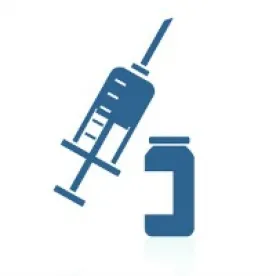Personalized medicine relies on diagnostic technologies to accurately evaluate a patient’s clinical or genetic signature to guide treatment decisions. Protecting innovation by patenting the diagnostic methods and tools that inform clinical intervention and treatment has been the traditional means to protect investment in these important technologies. Recent U.S. Supreme Court decisions have challenged inventors’ ability to patent diagnostic innovations, notably the Supreme Court’s Prometheus, Myriad, and Alice decisions, by removing from the scope of patentable subject matter discoveries that broadly tie a medical marker, e.g., a biomarker or drug metabolite, to a therapeutic intervention (Prometheus), isolated products of nature such as mutated genes that are detected as individual biomarkers (Myriad) and abstract ideas that may integrate complex clinical information (Alice).
A panel of experts speaking at Foley & Lardner’s 11th Annual IP Conference on September 18th, 2015 offered their opinions on how the new patent-eligibility standards are impacting procurement and litigation of diagnostic patents. The experts also provided their recommendations on how to live within the new patent-eligibility standards as defined by the Supreme Court and applied by the USPTO. The panelists were:
-
Kevin Dunn, Chief IP Counsel, Lincoln Electric Company
-
John E. Haugen, Senior Counsel IP, Takeda Pharmaceuticals, USA, Inc.
-
Duane C. Marks, Patent Counsel, Bio-Products, Eli Lilly and Company
-
Courtenay C. Brinckerhoff, IP Counseling Partner, Foley & Lardner, LLP
-
Matthew B. Lowrie, Partner, IP Litigation Partner, Foley & Lardner, LLP
The following points are key takeaways offered by the panel:
The current patent-eligibility climate has created significant uncertainty that is impacting investment decisions. Diagnostic patents and patents related to natural products such as detecting and using natural products are now more closely evaluated to ascertain whether the patent claims could survive a patent-eligibility challenge. The panelists also noted that while Japan and Europe have not applied the same restrictive eligibility standard as the U.S. Supreme Court, the size of the US market typically is sufficiently significant such that the issue affects the total valuation of a patent portfolio when international patent rights exist.
With respect to discoveries yet to be filed as patent applications with the U.S. Patent Office, the current standards have delayed patent filings until more data and technology is available to support the claims. Also, claims that are allowed are narrower in scope than diagnostic patent claims that were granted before the U.S. Supreme Court’s decisions. Diagnostic patent claims are now more likely to be tied to a specific technique or tool, such as the use of a specific probe/primer pair or monoclonal antibody.
The panelists also suggested that patent claims follow the claiming format provided by the USPTO in its guidance documents, the most recent version having been released in late July 2015 and use different claim formats to describe the technology. For discoveries that may use an algorithm or software to interpret clinical and/or genetic information, the panelists suggested drafting the claims with more specificity in terms of the problem to solved and its solution and if possible, to couple the software or algorithm to the hardware used for the method.
With respect to litigation, the panelists reported an increase in the number of patent-eligibility challenges raised in defense of patent infringement action, which has increased the cost of patent enforcement.
The panelists do not believe that the U.S. Congress is likely to step in to modify the Supreme Court’s interpretation of patent-eligibility. Therefore at least in the short term, that is until we see the pendulum swing toward a less restrictive view of patenting discoveries in these technologies, Congress could provide an exclusivity period similar to that provided the pharmaceutical and biotechnology industries that would provide some means to recover investment in diagnostic innovation. Right now, as one panelist noted – diagnostic innovation is a casualty of the current state of health care in the United States.




 />i
/>i

